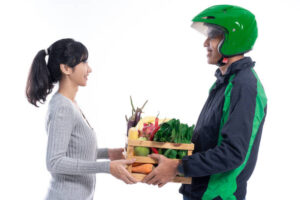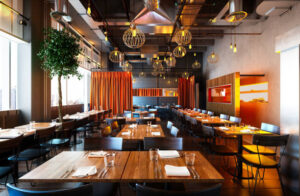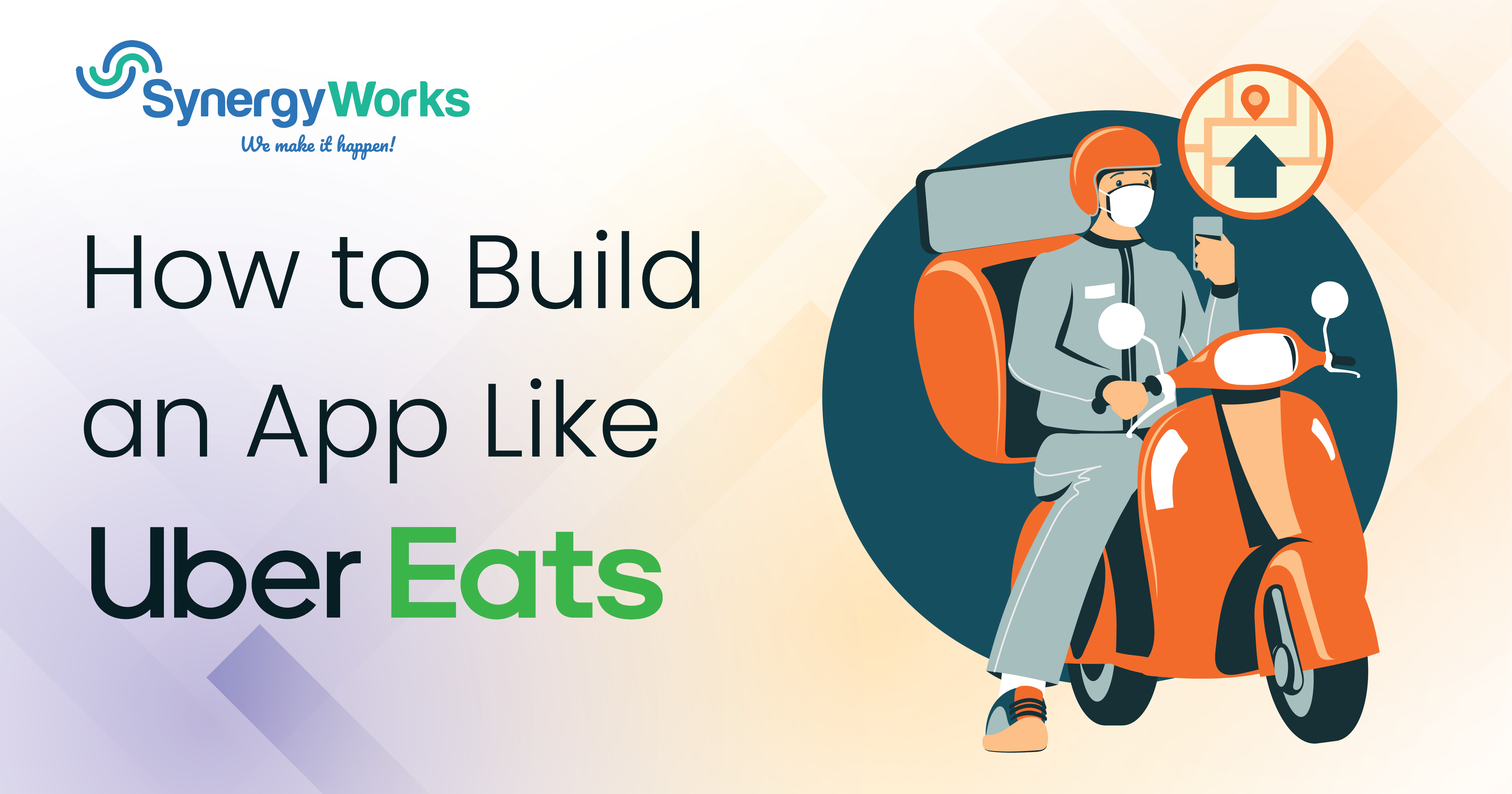The surge in popularity of food delivery apps is undeniable. Their convenience, affordability, and flexibility have revolutionized the way both consumers and restaurants approach food ordering. In 2022, this trend was underscored when over 3 billion individuals worldwide tapped into the convenience of online food delivery services.
Uber Eats stands tall among these platforms. Boasting approximately 81 million users, it has woven itself into the fabric of our food delivery culture, becoming a household name. In fact, Uber Eats’ success has inspired many to explore the possibilities of creating their own app in this competitive space.
Curious about building a similar food delivery platform? This article unravels the process of constructing an app like Uber Eats, guiding your tech journey from ideation to execution.
What Is Uber Eats and What Is Its Business Model?
Uber Eats, an online food ordering and delivery platform, emerged on the scene in 2014. It is currently operational in over 6,000 cities across 45 countries. The platform’s couriers, utilizing bikes, scooters, cars, or even traveling on foot, ensure that your meal reaches your doorstep safely and promptly.
Customers can peruse a diverse array of local restaurant offerings via the Uber Eats app, placing orders with a few simple taps. For a nominal delivery fee, the ordered food is brought directly to the customer’s location, thus eliminating the need for time-consuming pickups.
The genius of Uber Eats lies in its dual-faceted business model. It serves as both a restaurant aggregator and a delivery agent.
As an aggregator, Uber Eats lists partner restaurants on its app, allowing users to place delivery requests that restaurants can view and fulfill.
As a delivery agent, the platform offers logistics support to its partnering restaurants. It utilizes its expansive network to deliver orders for those establishments lacking the resources or bandwidth for food delivery.
A Step-by-Step Guide to Building a Food Delivery App Like Uber Eats
Having delved into the success of Uber Eats, let’s explore the steps to emulate its thriving model for your own food delivery app.
Having gleaned some insights into Uber Eats and its thriving business model, let’s delve into the process of creating a similar food delivery app.
1. Market Research

Every great product begins with thorough market research. This involves a comprehensive understanding of your target audience, their eating habits, favorite cuisines, and their delivery expectations. Moreover, it’s crucial to gauge the competition in your desired locations.
Scrutinize successful food delivery services, their strengths, and potential areas of improvement. This invaluable information will guide your app’s unique selling proposition, ensuring it fills a gap and satisfies the needs of its prospective users.
2. Selecting the Food Delivery Model

The selection of the delivery model is a strategic decision that will significantly impact the app’s operational workflow.
Order-Only Model

In the Order-Only model, your app serves as a virtual menu and ordering platform. Customers browse options and place orders while the restaurant handles the delivery logistics. This model is less complicated to implement and manage but also offers less control over the customer’s complete experience.
Order & Delivery Model
The Order & Delivery model requires a more significant investment in resources as the app takes full control of the process – from ordering to delivering meals to the customer’s doorstep. The upside is a seamless, fully managed experience that could potentially increase customer satisfaction and loyalty.
5. Choosing the Features
The features are what truly distinguish your app. They should be designed keeping three key user types in mind: restaurants, customers, and delivery staff.
For Restaurants

- Business registration and profile management
- Content/menu management
- Order management
- Payment tracking
- Ratings & reviews management
- Support
For Customers

- User registration
- Search field
- Ordering and tracking
- Payment integration
- Notifications
- Ratings & reviews
- Reward points
For Delivery Staff
- Login/registration
- Profile setup
- Order management
- Status updates
- Delivery history
- Earnings screen
6. Developing the App

The actual development phase is where your idea becomes a reality. It’s paramount to choose a reliable and experienced development team, such as SynergyWorks, to ensure a smooth process. This step involves creating wireframes, designing UI/UX, coding, and extensive testing to eliminate bugs and improve user experience.
It’s advisable to release a minimum viable product (MVP) first – a version with only essential features, to gather user feedback and make necessary adjustments.
Releasing the App and Upkeep
After releasing the app, it’s essential to monitor its performance closely, gather user feedback, and make improvements.
Regular updates are necessary to fix bugs, add new features, and adapt to changing user preferences. Remember, a great app isn’t just built; it’s nurtured and improved over time.
How Much Does It Cost to Build a Food Ordering and Delivery App?
Now that we’ve covered the steps for creating an app akin to Uber Eats, your next question might revolve around cost. The expense of such a project is determined by multiple factors.
Platform
The chosen platform, whether Android, iOS, or both, influences the cost. Cross-platform development may elevate expenses, considering the complexity of catering to different operating systems’ specifications.
Feature Set
A diverse feature set increases the investment. Basic functionality like order tracking, menus, and payment options are essential. However, advanced features such as AI recommendations or loyalty programs compound the complexity and cost.
Number of Integrations
Third-party integrations, from payment gateways to GPS services, require additional work and, thus, increase the overall cost.
Development Hours and Location

The development duration directly impacts cost, as does the location of your development team. Onshore teams often charge more than their offshore counterparts due to higher living expenses.
Bearing these elements in mind, the average cost for a straightforward yet robust food delivery app like Uber Eats ranges between $10,000 to $100,000.
Develop a Thriving Food Delivery App with SynergyWorks
Uber Eats has experienced remarkable success since its inception in 2014, and the pandemic only amplified its prominence in the food delivery industry. As we’ve explored the cost factors and development intricacies, it’s clear that creating a similar app requires expert guidance.
That’s where SynergyWorks comes in! Our skilled team helps transform your ideas into a tangible product, managing the nuances of platform choice, feature sets, integrations, and cost considerations.
Don’t wait to start your journey in the exciting world of food delivery apps. Contact SynergyWorks today to begin sculpting your roadmap to success!
About Author
Shikha Taman
Shikha Taman is the founder & CEO of SynergyWorks Solutions. With over 12 years of experience in the industry. She has extensive knowledge of software engineering, project management, client management, and business strategy. She strives to ensure all the products developed are always up-to-date with materializing technologies to remain competitive in today’s marketplace.




